Join with me as we learn more about this gorgeous blue/green gem. I want to share some of it’s history and origins.
Turquoise is one of the most iconic and cherished gemstones. Its striking blue and green hues have captivated people for centuries, earning it a special place in cultures around the world. As a jewelry designer based in Arizona, I’ve worked extensively with turquoise. While turquoise is found in several parts of the world, I choose to work with turquoise gems mined in Arizona, Nevada, California and Mexico. Let me take you on a journey to explore its fascinating history, origins, uses, and why it continues to shine in jewelry today.
Where Does Turquoise Get Its Name?
Did you know that the word “turquoise” means “Turkish stone”? While it’s tempting to assume this gemstone comes from Turkey, that’s not exactly the case. The original turquoise stones came from Persia, now modern-day Iran. Centuries ago, Turkish traders brought these exquisite stones into Europe, selling them in markets and bazaars. Over time, Europeans started calling these gems “Turkish stones” due to their connection with the traders, and the name stuck.
Today, turquoise is mined in various parts of the world, including the southwestern United States, northern Mexico, China, and Iran. Major mining areas in the U.S. include Arizona, Nevada, New Mexico, and Colorado. Though some mines still produce turquoise, many of the richest sources have been depleted.
A Southwest Treasure
Arizona is particularly synonymous with turquoise, largely because of its cultural significance and history. One of the most famous sources here is the Sleeping Beauty Mine. Sleeping Beauty turquoise is prized for its smooth, solid blue color with minimal veining or matrix. the Cuff bracelet shown at the top of this blog features Sleeping Beauty turquoise.
On the other hand, turquoise from other regions feature unique patterns and inclusions. For example, stones with “spider web” veining are characteristic of turquoise mined in Nevada. Even areas like Bisbee in northern Arizona have their distinct styles, offering a wide variety of looks for collectors and jewelry lovers alike.
From Rough Stone to Cabochon
Before turquoise becomes part of a stunning piece of jewelry, it starts as rough stone, often raw and irregular. To make it usable, the stone is shaped into cabochons, which are polished gemstones with flat bottoms. The flat base makes it easier to set them into jewelry designs, ranging from rings to necklaces to cuffs.
Personally, I’ve been fortunate to work with some high-quality turquoise sourced decades ago. A gentleman I knew had access to turquoise mined from Arizona in the 1950s and 1960s. These stones were transformed into cabochons, and when he retired, I had the privilege of purchasing his collection. Today, these materials are part of my handcrafted designs, keeping their story alive.
Turquoise in Native American Culture
Turquoise holds deep meaning in Native American traditions. Many tribes used it for adornments, tools, and ceremonial purposes. For instance, the Apache believed turquoise brought good fortune. They even embedded small turquoise chips onto their bows, hoping this would make their arrows fly straighter and hit their targets.
Turquoise was often paired with coral, another material steeped in cultural significance. Since coral isn’t native to the Southwest, it’s believed that early Native Americans traded with coastal tribes to obtain it. The striking red coral combined with turquoise creates a bold and timeless contrast, a pairing that’s still popular in jewelry today.
The Versatility of Turquoise in Jewelry Design
One of turquoise most attractive qualities is how versatile it is. You might think turquoise only pairs well with traditional silver, but its beauty shines alongside many metals and gemstones.
- Turquoise and Sterling Silver: Sterling silver enhances turquoise vibrant hues, creating timeless elegance.
Turquoise and Copper: Copper’s warm tone makes turquoise pop, adding a rustic, earthy charm.
Turquoise and Ruby: The vivid blue of turquoise and the rich red of ruby create a dramatic and unforgettable pairing.
Turquoise and Amethyst: Who says opposites don’t attract? The cool blue of turquoise complements the deep purple of amethyst beautifully. - Turquoise and Gold. Two rich companions creating a spectacular
Beyond these combinations, turquoise works well with a variety of gemstones, making it a go-to choice for custom designs.
Turquoise carries centuries of history and cultural significance. It connects us to ancient civilizations, trade routes, and traditions. From its use in Native American ceremonies to its European trade origins, every piece of turquoise has a story.
For collectors and jewelry enthusiasts, turquoise is more than a gemstone—it’s a conversation starter. Whether it’s a cabochon set in silver or a bold cuff paired with copper, turquoise brings artistry and history together in every piece.
Looking Ahead
This is just the beginning of what there is to know about turquoise. From how to identify real stones to understanding the factors behind its color variations, there’s much more to uncover. Stay tuned for future posts where I’ll dive deeper into these topics, including how to care for your turquoise jewelry.
Until then, if you’re as smitten with turquoise as I am, explore your local shops, online creations, or even vintage collections. You just might find a piece that tells a story you’ll cherish forever.
Follow me on my design journey and become a collector. Not only do my collectors receive first look at my newest designs but the also have the advantage of Collector-only discounts and specials. It’s Free. In addition you Get 15% off your first order.
Here’s How
Shop Here for all my Designs



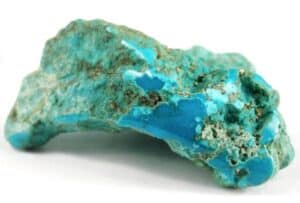

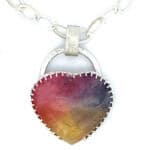
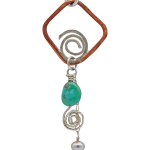


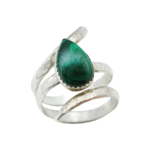
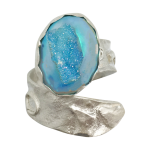
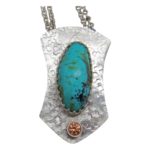
Leave a Reply